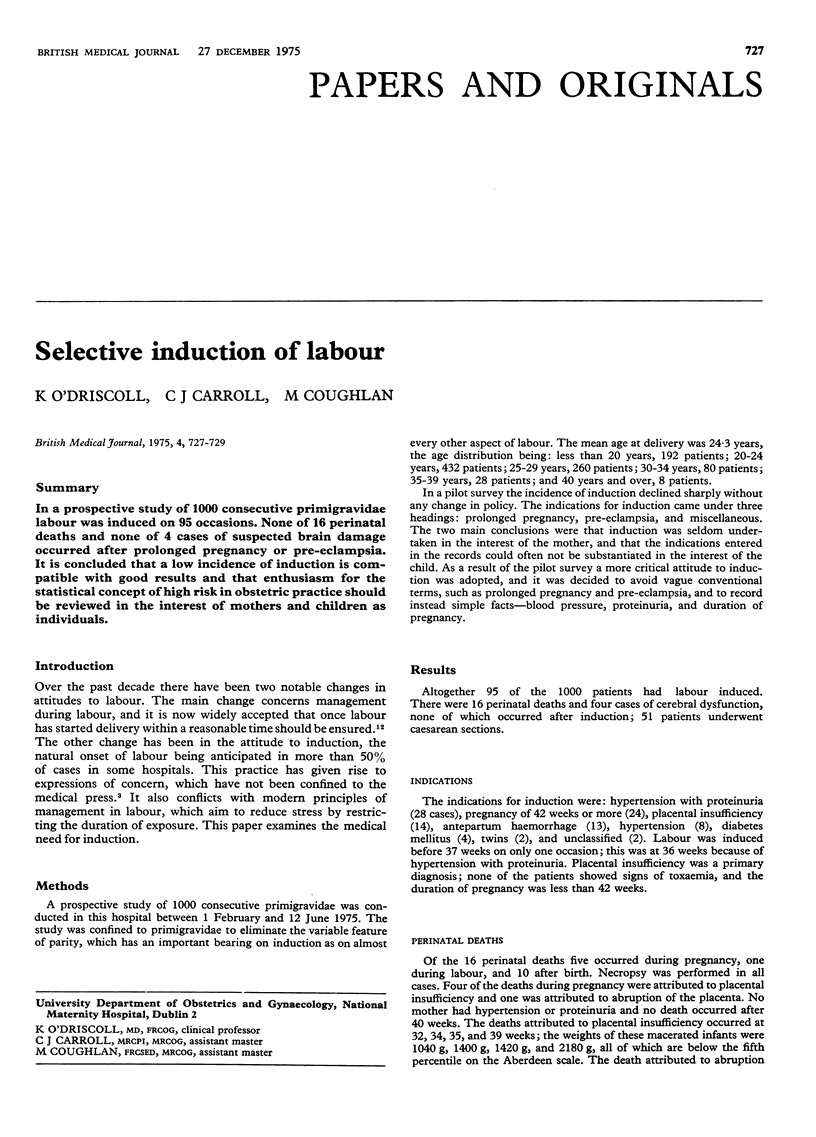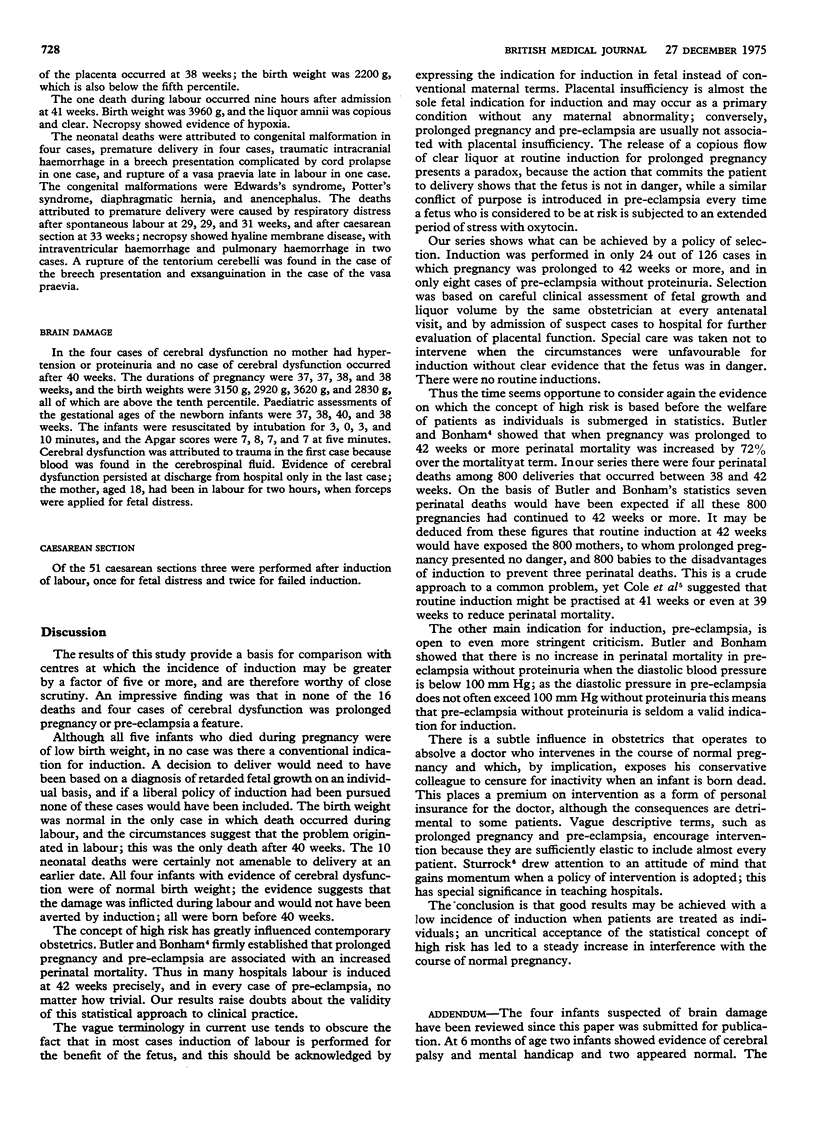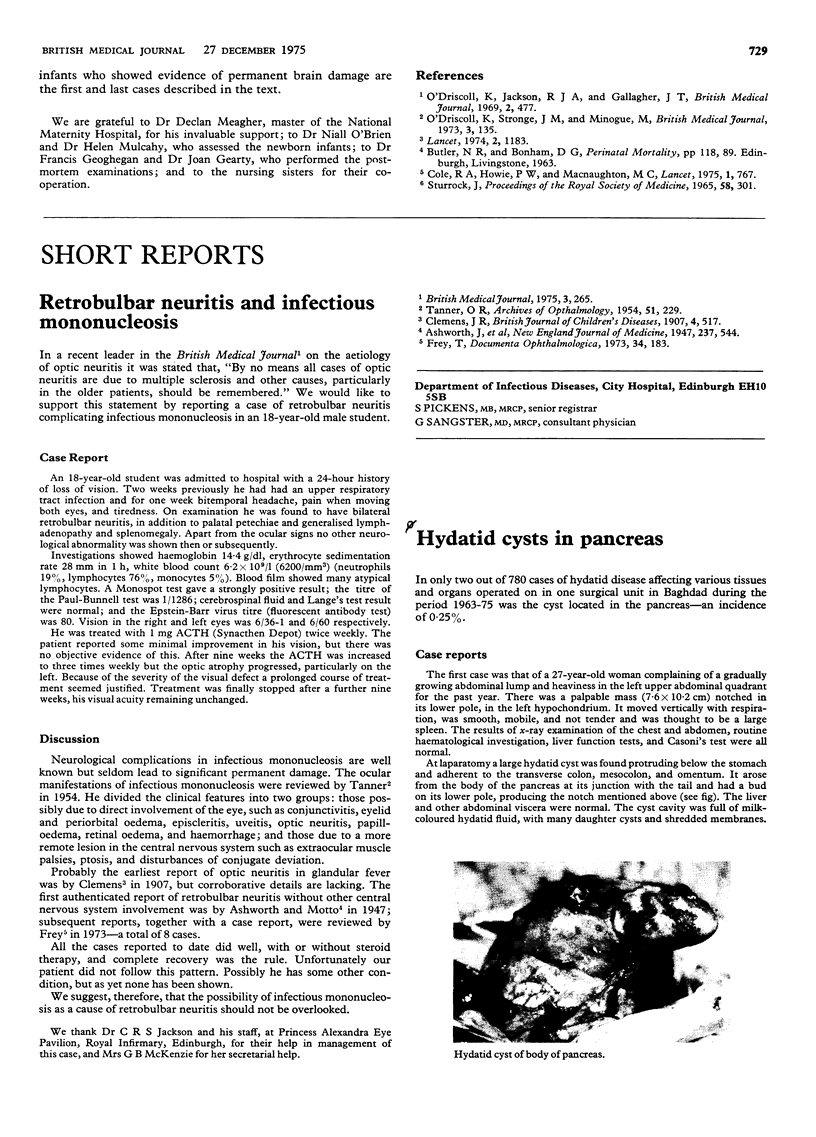Abstract
In a prospective study of 1000 consecutive primigravidae labour was induced on 95 occasions. None of 16 perinatal deaths and none of 4 cases of suspected brain damage occurred after prolonged pregnancy or pre-eclampsia. It is concluded that a low incidence of induction is compatible with good results and that enthusiasm for the statistical concept of high risk in obstetric practice should be reviewed in the interest of mothers and children as individuals.
Full text
PDF


Images in this article
Selected References
These references are in PubMed. This may not be the complete list of references from this article.
- Cole R. A., Howie P. W., Macnaughton M. C. Elective induction of labour. A randomised prospective trial. Lancet. 1975 Apr 5;1(7910):767–770. doi: 10.1016/s0140-6736(75)92435-6. [DOI] [PubMed] [Google Scholar]
- O'Driscoll K., Jackson R. J., Gallagher J. T. Prevention of prolonged labour. Br Med J. 1969 May 24;2(5655):477–480. doi: 10.1136/bmj.2.5655.477. [DOI] [PMC free article] [PubMed] [Google Scholar]
- O'Driscoll K., Stronge J. M., Minogue M. Active management of labour. Br Med J. 1973 Jul 21;3(5872):135–137. doi: 10.1136/bmj.3.5872.135. [DOI] [PMC free article] [PubMed] [Google Scholar]
- STURROCK J., LENNON G. INDUCTION OF LABOR. Proc R Soc Med. 1965 May;58:301–304. [PMC free article] [PubMed] [Google Scholar]



